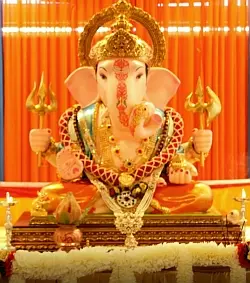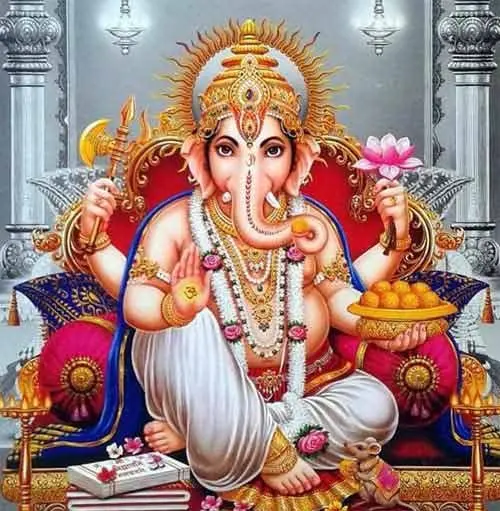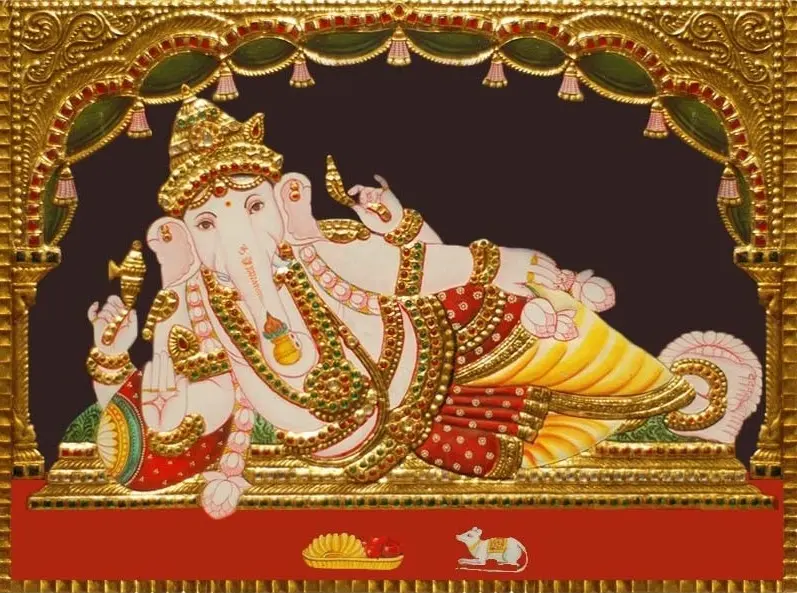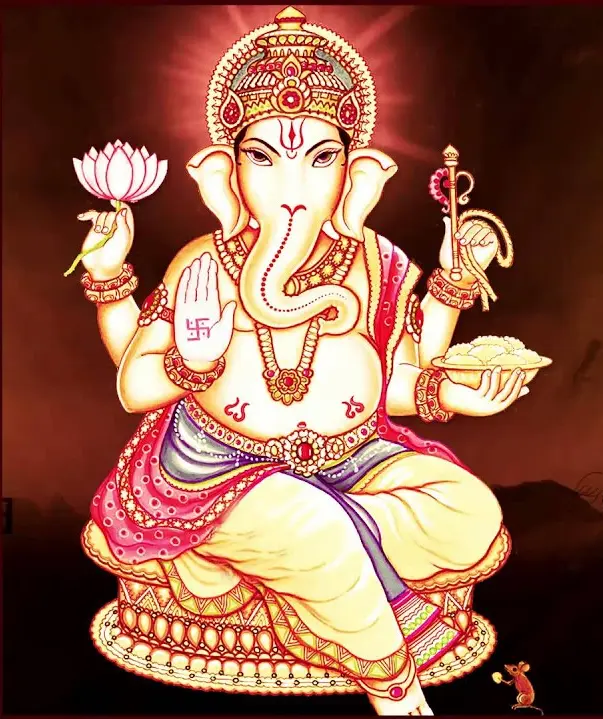 Ganesh Chaturthi, also called Vinayaka Chavithi, is an auspicious Hindu festival which is celebrated for 10 days every year. The festival is celebrated in the Bhadra month as per the Hindu calendar which generally falls in mid-August to September. It marks the birthday of the beloved elephant-headed Lord Ganesha. This year, Ganesh Chaturthi begins on 10th September, and all the festivities will end on 21st September.
Ganesh Chaturthi, also called Vinayaka Chavithi, is an auspicious Hindu festival which is celebrated for 10 days every year. The festival is celebrated in the Bhadra month as per the Hindu calendar which generally falls in mid-August to September. It marks the birthday of the beloved elephant-headed Lord Ganesha. This year, Ganesh Chaturthi begins on 10th September, and all the festivities will end on 21st September.
Ganesh Chaturthi history
Ganesha is the younger son of Lord Shiva and Parvati. There are various stories behind his birth but two of them are the most common ones.
According to the first story, Lord Ganesha was created by Parvati out of dirt from her body to guard her in the absence of Shiva. She gave him the task of guarding her bathroom door while she took a bath. In the meantime, Shiva returned home and Ganesha, who didn’t know who Shiva was, stopped him. This angered Shiva and he severed Ganesha’s head after a tiff between the two. Parvati was enraged when she came to know about this; Lord Shiva, in turn, promised to get Ganesha back to life. The devas were sent to search for a child’s head facing north but they could only find an elephant’s head. Shiva fixed the elephant’s head on the child’s body, and that how Ganesha was born.
Ganesh Chaturthi Rituals
There are four main rituals which are performed during the 10-day long festival. They are namely– Pranapratishhtha, Shhodashopachara, Uttarpuja, and Ganpati Visarjan.
The excitement of Ganesh Chaturthi settles in weeks before the festival actually begins. Artisans start preparing clay idols of Ganesha in different poses and sizes.
The Ganesha idols are installed in beautifully decorated ‘pandal’ at homes, temples or localities. The statue is also decorated with flowers, garlands and lights. A ritual called Pranapratishhtha is observed where a priest chants mantra to invoke life in the diety.
Prayers are then offered to Ganesha’s idol in 16 different ways. This ritual is called Shhodashopachara.
People celebrate by singing or playing religious songs, dancing to drum beats and by lighting up fireworks– all of which add to the festive mood.
The Uttarpuja ritual is then performed which is about bidding farewell to Ganesha with deep respect. This is followed by Ganpati Visarjan, a ceremony wherein the statue is now immersed in water. While carrying the statue to the sea and while immersing it, people generally chant in the Marathi language ‘Ganapati Bappa Morya, Purchya Varshi Laukariya’ which means ‘Goodbye Lord, please come back next year’.
While some devotees celebrate this festival at home, others pay their visit to Lord Ganesha at public pandals. People offer their due respect, prayers and offerings to Ganesha. Dishes like Lord Ganesha’s favourite Modak, Pooran Poli, and Karanji are prepared for friends, family and visitors.

What does the name Ganapathi signify? Ga means buddhi (or intellect), Na means vijnana (wisdom). As Vighneswara is the Lord of the Intellect and Wisdom, he is called Ganapathi.
It follows from this that what are called ganas are parts of the human body. The individual (vyakti) is a part of creation (srishti). Hence, Divinity, of which the cosmos is a projection, is immanent in the human being. Vigatho nayaka Vinayaka (“Vinayaka has no master over him.”) This means that Vinayaka is a totally autonomous and independent deity. He has no Lord above him. In the world, any individual or authority has someone superior above him. But Vinayaka has no overlord.
The worship of Vinayaka has been in existence from times immemorial in Bharat. The Rig Veda, the Narayanopanishad and the Taittiriya Upanishad have passages referring to Vinayaka. It is embedded also in the Gayatri Mantra.
Tat purushaya Vidmahe
Vakratundaya dheemahi
Tanno Danti Prachodayath
This mantra indicates that Vinayaka’s Divinity is glorified in the Gayatri Mantra. Hence Ganapathi signifies an all-pervading Divine potency. In everyday parlance, Ganapathi is described as the son of Parvati. Parvati represents prakriti (Nature). Man is a child of nature. Hence every human being is a Vinayaka. He is a spark of the Divine Shiva-Sakti, the union of the Lord and Nature. Everything in the world has emanated from nature (prakriti). All things are aspects of nature. It is to reveal this sacred truth that holy festivals are observed.

Eka danta: Single tusked
When Vinayaka was writing the Mahabharata to the dictation of Sage Vyasa, the latter laid down the condition that Vinayaka should go on writing non-stop whatever Vyasa said. But Vinayaka also stipulated a condition that Vyasa should never stop his dictation but should go on without a break. While he was writing, Vinayaka’s pen broke and he did not hesitate to break one of his tusks to use it as a pen. That is why he is called eka danta or one with a single tusk. This is a shining example of the spirit of sacrifice that Vinayaka exhibited for the welfare of humanity. That is why the Vedas proclaim that it is only by sacrifice one can attain immortality.
Ganesha is bathed in His Divine Glory; that is the significance of the attribute, shashivarnam. Chathur-bhuja (four-handed) is the next denotation. This means that apart from two visible hands, He has two invisible hands, that are available for the two Divine uses of (1) Blessing the devotee, and (2) Guarding him from danger. The last of the descriptive word is: Prasannavadanam (of graceful countenance). The countenance depicts the inner calm, happiness and balance, inner grace and mercy, the consciousness of strength and sovereignty.
There is a popular verse, used on most occasions when Ganapathi is invoked. It mentions various attributes of this God: Suklambaradamram (wearing white vesture) is the first; this is the symbol of purity, for, ambara means also the sky, the akasha (sky) of the heart. Ganapathi is pure, having universal Love and Compassion. Vishnum is the second attribute, ascribed to Him. Vishnu means that He is present everywhere, at all times. Shashivarnam is the third adjective used: of the complexion of ash or vibhuti; that is to say, glowing with spiritual splendour, with the majesty of spiritual attainments, achievements and potentialities. These are also called vibhutis, for, in the Geetha, we find Krishna saying, “Wherever you see Power, Glory, Majesty (vibhuti), know that it is Mine!”

![]()

